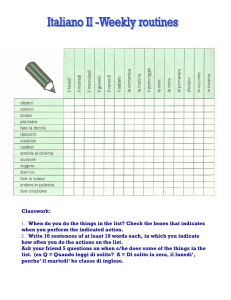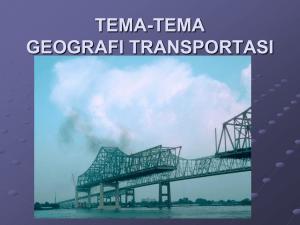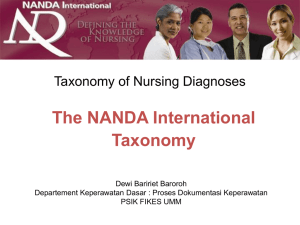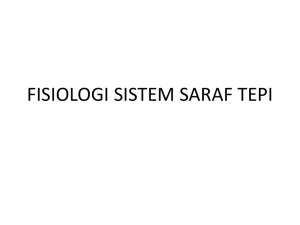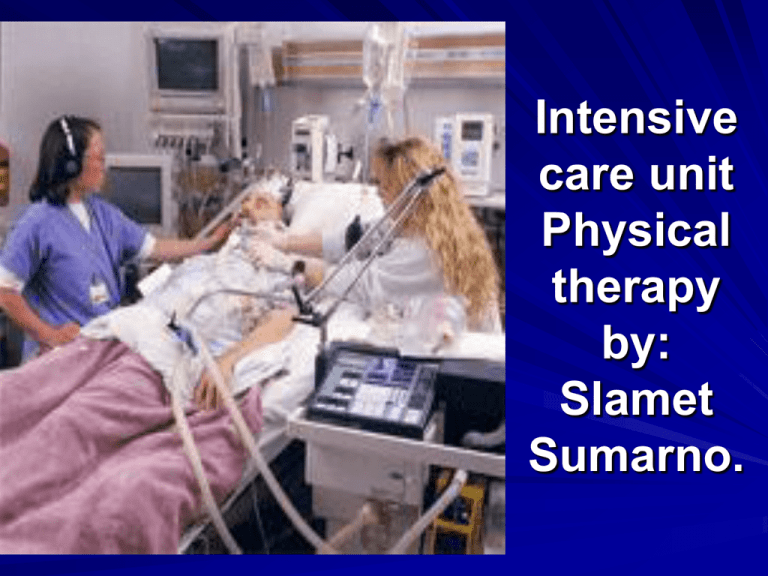
Intensive
care unit
Physical
therapy
by:
Slamet
Sumarno.
Fisioterapi ICU
Intensive Care Unit = Perawatan intensif.
ICU umumnya rawat kond kritis Cardiorespirasi
dan banyak menggunakan alat bantu serta
ditangani secara team.
?
Siapa yang harus di rawat di ICU.
Gejala gagal nafas (krirtis pernafasan).
Indikasi memerlukan alat bantu pernafasan.
Tidak stabilnya pernafasan .
Kritis trauma capitis.
Kondisi yg memerlukan perawat intensive.
Gagal nafas.
Pengertian.
Gagal nafas diartikan sebagai kegagalan
pertukaran gas dlm paru yg ditandai
dengan turunnya kadar oksigen di arteri
(hipoksimia) atau naiknya kadar
karbondiaksida (hiperkarbia) atau
kombinasi keduanya.
Kriteria diagnosa gagal nafas.
PaO2 <
60mmHg,
PaCO2 > 49
mmHg tanpa
gangguan
alkalosis
metabolik primer
(Muhadi,OE Tampubolon, 1989)
Pemeriksaan lab Gas Darah
Asidosis
acut respiratory
acidosis
a 7.1 metabolik acidosis
r 7.2
chronic respiratory
t 7.3
acidosis
e 7.4
r 7.5
metabolik alkalosis
I 7.6 respiratory alkalosis
7.7
2 4 6 8 10 12
Alkalosis PH= 7,35-7,4 PCO2= 5-6 kpa
Etiologi Gagal nafas.
Penyakit akut atau kronik kembali akut.
Acut dan Acut on chonic respiratory failure
(hipersekresi, spasme bronkus, edema
mukosa).
Spasme bronkus pada: Asma, bronkitis
kronik yg berkembang menjadi emfisema
Lanjutan.
1.
2.
3.
4.
5.
6.
Otak: Neoplasma, Epilepsi, Hematoma
subdural, Keracunan morfin dan CVA.
Susunan neuromuskular: Miastenia gravis,
Polyneuritis, Analgesia spinal tinggi,
kelumpuhan otot respirasi.
Dinding thorak, diapragma: Trauma thorak.
Paru: Asma, infeksi paru, Aspirasi, pneumonia,
edema paru.
kardiovaskuler: Gagal jantung, emboli paru.
Pasca bedah: laparatomi dll
Komplikasi rawat ICU.
Peningkatan resiko infeksi nosocomial
atelectasis
Mechanics
ventilasi
pasien
yang
memungkinkan terjadi penurunan FRC dan
CL , V/Q nya tidak sebanding۬
immobilisasi pada pasien dengan penyakit
kritis yang menderita muscle deconditioning,
peningkatan resiko DVT, pressure sore
FRC=fungsional reserve capacity.
CL = lung capacity
V/Q = volume/ cordiac out put. DVT=penurunan volumr total
Problem
Koknetif
gerak
Manusia
sikap
Physiotherapy Assessment
Cognition, motivation, patients own goals
Previous level of function & independence
Posture, movement, strength, balance, pain
Functional ability; sitting, standing, transferring,
walking, turning, reaching, bed mobility, stairs,
getting up from floor, arm & hand function,
exercise tolerance
Use of Objective measures
Physiotherapy programme
Exercises to address specific problems,
e.g. loss of joint movement, muscle
weakness, balance problem.
Functional activity, in a safe, supervised
environment, to improve performance and
confidence
Provision of and practise using appropriate
mobility aids
1.
2.
3.
4.
5.
6.
Problematik
umum
Gangguan pernafasan.
Gangguan Jantung dan sirkulasi.
Gangguan Hormonal dan bufer.
Gangguan sistem syaraf.
Kecerdasan menangkap perintah.
Ganguan perilaku.
PROBLEM PERNAFASAN.
Oleh karena:
1. Gangguan systen neurologi.
2. Gangguan Sangkar thorak.
3. Gangguan jalan nafas / obtruktif.
4. Gangguan pleurae.
5. Gangguan perfusi / restriktif.
6. Gangguan system sirkulasi pulmonal.
7. Gabungan satu sampai enam
Tujuan Fisioterapi ICU
• meningkatkan/mempertahankan
A.fungsi cardiopulmonari:
1. Posisioning.
2. Membuka jalan nafas.
3. Oksigen terapi.
4. Meningkatkan ventilasi.
5. Fasilitasi dan stimulasi breathing.
4 a. mekanik ventilasi
b. Breathing exercises
B. Fungsi Musculoskeletal
1. Joint function / movement
2. Performance kerja otot.
3. Balance, coordination, komunikasi
4. Performance fisik : ambulation / ADL
C. Fungsi Neuromuskular.
1. Sensasi,
2. stimulasi,
3. Inhibisi.
D. Edukasi .
E. Mencapai goul (harapan).
F. Evaluasi .
PROSES FISIOTERAPI
Assessment /reassessment Mesurment. /
remesurment
Analysis of findings
Problems identification
Intervensi/Implementation of treatment /
modifikasi
Planning of treatment
Diagnosa fisioterapi
Evidence Based Practice
Falls – strength & Balance training
NSF, NICE, CSP Guidelines
Locally developed guidelines; walking
aids, falls prevention education leaflets,
group exercise, resistance training for
osteoporosis
Evidence Based Medicine (EBM)
“Menggunakan segala pertimbangan
bukti ilmiah (evidence) yang sahih yang
diketahui hingga kini untuk menentukan
pengobatan pada penderita yang
sedang kita hadapi”.
Merupakan penjabaran bukti ilmiah
lebih lanjut setelah obat dipasarkan dan
seiring dengan pengobatan rasional.
Lima tahap evidence based
Memformulasikan pertanyaan tentang masalah
fisioterapi yang dihadapi
Menelusuri bukti-bukti terbaik yang tersedia
untuk mengatasi masalah tersebut
Mengkaji bukti, validitas dan keseuaiannya
dengan kondisi praktek
Menerapkan hasil kajian
Mengevaluasi penerapannya (kinerjanya)
Assessment FT Kritis Di ICU
Baca status riwayat dan keadaan sekarang.
1. Posisi
pasien:
Sudah memudahkan proses pernafasan.
Sudah membantu sirkulasi.
Sudah menguntungkan bila terjadi kekakuan.
Sudah mencegah dekubitus.
Sudah memudahkan / memfasilitasi pernafasan
dan gerak fungsional.
2. Kenali alat dan monitor yg ada
Sounde. Tentukan ukuran soude yang masuk
oesophagus.
b. Thrachea tube : tentukan ukuran panjang yang
masuk thrachea. 18, 19, 20, 21, 22 dst
biasanya dewasa 22 cm.
c. Tentukan apakah monitor EKG berfungsi
dengan baik ( terutama elektrode yg terpasang
pada dada dan tangan atau kaki biola ada.
d. Tentukan ventilator berfungsi dengan baik,
menggunakan inhalasi atau tidak,
e. Monitor Vital sign.
a.
Sistem assesment / mesurment.
1. Fungsi tingkat kesadaran.
2. Vital sign.
3. Fungsi jalan nafas dan paru
4. Fungsi jantung dan sirkulasi.
5. Fungsi sangkar torak : sendi, otot dan tl
6. Fungsi umum: sendi, otot, gerak
Kesadaran.
1.
2.
3.
4.
5.
6.
Kompos mentis : bereaksi sgr dgn orientasi sempurna.
Apatis: terlihat mengantuk tetapi mudah dibangunkan,
reaksi penglihatan, pendengaran dan perabaan
normal.
Somnolen: dapat dibangunkan bila dirangsang, dapat
disuruh dan menjawab pertanyaan bila rangsangan
berhenti penderita tidur lagi.
Sopor: dapat dibangunkan bila dirangsang dengan
keras dan terus menerus.
Soporcoma: reflek motoris terjadi hanya bila
dirangsang dengan rangsangan nyeri.
Coma: tidak ada reflek motoris sekalipun dengan
rangsang nyeri.
PEMERIKSAAN KESADARAN
STEP
PROSEDURE
A. KESADARAN
Tingkat kesadaran.
-Kompos mentis
1.
(GCS=15) E4M6 V5.
2.
-Somnolen
(GCS=12-14)
3.
-Sopor (GCS=8-11)
4.
-Coma (GCS=3-7).
GCS: Glascow
Coma Scala dari 315).
5.
6.
Kompos mentis : bereaksi segera dengan orientasi
sempurna. (15)
Apatis: terlihat mengantuk tetapi mudah
dibangunkan, reaksi penglihatan, pendengaran dan
perabaan normal. (14-15)
Somnolen: dapat dibangunkan bila dirangsang,
dapat disuruh dan menjawab pertanyaan bila
rangsangan berhenti penderita tidur lagi. (12-14)
Sopor: dapat dibangunkan bila dirangsang dengan
keras dan terus menerus.(8-11)
Soporcoma: reflek motoris terjadi hanya bila
dirangsang dengan rangsangan nyeri. 7-8
Coma: tidak ada reflek motoris sekalipun dengan
rangsang nyeri. (3-7)
Glasgow coma scale
Eye Opening
E
Best Motor
Response
Spontan
4
Terhadap perintah:
Dng Perintah
3
Menurut perintah
M
6
Dng rangsang nyeri
2
Rangsang nyeri:
no response
1
Melokalisasi nyeri
5
flexion-menarik baik
4
flexion-abnormal
3
extension
2
no response
1
E + M + V = 3 to 15
Best Verbal
Response
orientasi dan
berbicara
disoriented dan
berbicara
Kata-kata tak
sesuai
Suara tak
bermakna
Tidak ada respon
Bila nilai < 12 ICU
V
5
4
3
2
1
MATA (EYE=E=4.
E4= Spontan
membuka
mata.
E3= Terhadap suara
membuka mata.
E2= Terhadap nyeri
membuka mata.
E1= terhadap segala jenis
rangsang Menutup
mata
Tehnik. Baca nama pasien dipapan
nama pasien.
4. Spontan membuka mata.
3. Dipanggil namanya buka mata.
2. Diberi rangsang nyeri buka mata.
1. Rangsang nyeri tidak buka mata.
Respon pupil thd cahaya
Normal = 5
Lambat= 4
Respon tidak sama = 3
Besar tidak sama = 2
Tidak ada respon = 1
Cerebral perfusion presure (CPP)
Tekanan kritis yang adequate blood supply
terhadap otak dan mencegah acidosis, hypoxia
dan kerusakan.
Otak harus diipertahankan kontinusitas
tranportsai oksigennya dan tekanan darahnya
secara otomatis regulasi, range of blood presure
over tidak efektif dan dapat menimbulkan nyeri
kepala.
CPP = mean arterial presure (MAP) minus
intracranial presure (ICP).
Normal value > 70mmHg.
Critical value < 50 mmHg.
Intracranial presure.
TIK =Tekanan intra cranial normal berkisar 1-15
mmHg, yg berfluktuasi dng perubahan: BP, RR
pola nafas, batuk, mengejan.
TIK tergantung dari 3 unsur:
1). Jarinagn otak 80-87%.
2). Cairan serebrospinal (CSS)9-10%) dan
3). Darah yg ada dlm pembuluh darah otak
(1-10%).
Bila TIK > 16 mmHg dapat mengancam jiwa
pasien.
Reflek saraf cranial
Semua ada= 5
Bulu mata tidak ada= 4
Kornea tidak ada = 3
Doll’s tidak ada =2
Karina (semua) tidak ada= 1
Kejang (skor terbaru).
Kejang tidak ada = 5
Kejang fokal = 4
Umum , intermiten = 3
Umum kontinue = 2
Flaksid = 1
Nafas spontan
Normal = 5
Periodik =4
Hiperventilasi central = 3
Iregular/hipoventilasi = 2
Apnu = 1
Toatal skor = 35 terburuk = 7
Terdiri dari: 1. GSC=15.
2. Pupil= 5
3. Kejang (skor terbaru)=5
4. Reflek saraf cranial=5
5. Nafas spontan=5
Kejang (skor terbaru).
Kejang tidak ada = 5
Kejang fokal = 4
Umum , intermiten = 3
Umum kontinue = 2
Flaksid = 1
Nafas spontan
Normal = 5
Periodik =4
Hiperventilasi central = 3
Iregular/hipoventilasi = 2
Apnu = 1
Toatal skor = 35 terburuk = 7
Pain Stimulus
NAIL BED COMPRESSION
fine pressure with thumb
over pencil on the base of
the cuticle
Test bilaterally
N=(+)Crushing pain
STERNAL RUB
DSP
use knuckle over sternum
as if “grinding a pill” for 5
sec.
N=20-30 sec. Posturing
(initial reaction)
Wait for at least 30 seconds
TRAPEZIUS SQUEEZE
using thumb & 2 fingers,
grasp 2 inches of the muscle
& then twist
SUPRAORBITAL PRESSURE
use thumb
C/I: Cranial fracture
Oxygenation
Assess respiratory status.
Maintain patent airway & adequate ventilation.
Watch for S/S of hypoxia & hypercapnia…
Note for S/S of Hypoxia/
hypoxemia
(-) Spontaneous respiration
Restlessness/ irritability
Peripheral cyanosis
Use of accessory muscles of
respiration
Ala Nase flaring
Angina
Tachycardia
Tachypnea
GIT/ Renal Dysfunction (Late sx)
Dx/ Lab results:
Pulse Oximetry
Capnography
ABG
Hematology (hct; hgb)…
Oxygenation
Motor Function
Assess integration of consciousness &
voluntary movement.
Look for purposeful or non-purposeful
response.
Also assess muscle tone, size,
strength.
Observe for symmetric, spontaneous
movement of arms & legs…
Abn=
tics, tremors
= stress, long term use of
psychotropic drugs, neurologic
disorders (Parkinson’s, MS, or
HC)
MUSCLE STRENGTH GRADING
Grade
atrophy, paresis, plegia,
flaccidity, spasticity, rigidity =
motor neuron or muscle disease
unresponsive clients
–hemiplegia - corticospinal tract
damage
–decorticate - upper
corticospinal
tract
damage
–decerebrate – brainstem
damage
0
1
2
3
4
5
Description
No contraction
Slight contraction
Full passive ROM
Full ROM
Full ROM against
some resistance
Full ROM against
full resistance
Pupils
Assess for size,
shape & reaction to
light.
Observe for ptosis…
Pupillary Size
N= 1.5-6mm (3.5 avg.)
– Anisocoria
– N=17%;
– Abn=Herniation…
Controlled by:
– CN-III
– Brainstem
– Midbrain
Pupillary
Assessment
– Size
– Reaction
– Shape…
Pupillary Reaction
– N=
BRTL
Direct Consensual Light
response
Abn= SRTL
– early CN III compression
NRTL/ Fixed
–Fixed Dilated= ICP,
Prolonged diffuse hypoxia,
Atropine
–Pinpoint pupil = Narcotics
(Morphine, Demerol), Long
Acting analgesia (Fentanyl)
Hippus – cannot sustain
- constrict then redilates
with light on
– Bilateral Hippus
Abn= Seizure,
Meningitis
– Ipsilateral
Abn=(+)lesion/ brain
tumor
Pupillary Shape
N=Round
Abn=oval – ICP
(15-20mmHg)
- post frontal /
anterior
temporal
lesions
- Contusions…
Ocular Movement
Assess for deviation to
one side.
Also assess voluntary &
spontaneous
movement…
EOM – controlled by CN
– III, IV, VI…
Signs
Assess V/S.
Observe for significant trends.
Look for Cushing’s reflex:
PR,
RR,
Widened Pulse Pressure…
Urinary
Output
Assess for increased output, possible S/S of
impaired water regulation.
Also assess for electrolyte imbalance,
especially hyponatremia…
Oliguria ( below 30 cc)…
Reflexes
Assess for
pathologic
reflexes,
especially
babinski &
loss of
corneal or gag
reflex…
Corneal
– Pons
– Medulla
Gag/ Cough
– Medulla
– CN IX
– CN X…
Emergency
Evaluate assessment findings to determine
whether emergency exists.
If so report findings to doctor STAT…
Test for attention, concentration &
calculation.
Ask to count
backward from 100,
subtracting by seven
each time (”100, 93,
86…”).
N=Can count back into
the 50s within one
minute…
Memory
Test for short-term
memory
Name 3 unrelated objects
(e.g. car, garbage can,
alarm clock) then ask for
these words again for
within
few minutes
Test
fora long
term memory
Ask client’s mother’s
maiden name.
Memory Loss – abnormal
& signal disease, infection
or temporal lobe trauma…
Logic, Judgment, Reasoning &
decision-making ability
Test for Logic & Judgment
Ask “What would you do if you were inside a burning
building?”
N=sound judgment.
Abn=Frontal Lobe damage, dementia, psychosis,
mental retardation.
Test for reasoning & decision-making ability
answering questions appropriately
Ask the meaning of a proverb such as “A stitch in time
saves nine.”
Abn=low intellect, dementia, schizophrenia…
Emotional Stability, Speech &
Language
Emotional Stability
Moods, Feeling, Thought process
Speech & Language
Voice quality, Articulation, Content, Comprehension
N=Spontaneous & well paced speech; logical content
Ask to read a sentence form age-& education-appropriate
material; write name or simple sentence.
Abn=Aphasia (speech), dysarthria (articulation & rate),
dysphonia ( voice), apraxia (conversion of thought into motor
sound), agraphia ( writing), alexia (written language
comprehension)…
Cerebellar function
Gait
Ask to walk a straight heel-to-toe line.
– Abn=staggering, shuffling, tiptoe walking, foot
slap, leg drag.
– Uncoordinated gait & loss of balance =
motor, sensory, vestibular or cerebellar
dysfunction.
– Cerebellar ataxia – unsteady gait with legs
spread wide.
– Scissors gait – short, stiff steps with thighs
overlapping.
– Foot drop - lifts knee high then slaps foot down
– Parkinsonian shuffle – accompanied by stooped
posture
– Spastic paralysis - arms flexed & held to the
body, client “throws” each leg forward…
Cerebellar function Balance
Romberg’s test
–
–
–
–
arms at sides, feet together,
eyes closed for 20 seconds.
Watch for loss of balance.
Stand close enough to prevent falling.
N=slight swaying.
Abn
– loss of balance
– (+) Romberg
cerebellar ataxia, alcohol intoxication, MS,
impaired visual functioning, or loss of
proprioception.
Test for coordination, muscle strength, & cerebellar function
– Ask to stand on 1 foot & do a shallow knee-bend, or hop,.
Abn= Cerebellar dysfunction or lack of physical
fitness…
Cerebellar function
(Rapid alternating movements;
Accuracy of movement; Balance; Gait)
Rapid Alternating Movement (RAM) of the hands & fingers – assesses coordination & dexterity. Pat knees with the palms, then
flip & do so with the back of the hands, first slowly then faster.
– N=smooth & bilateral movement
– Abn=slow, awkward movement= cerebellar dysfunction
Ask to touch thumb to each finger from index to 5th finger & back
again, slowly at first then faster. Repeat on the other hand.
Abn=Dyssenergy (lack of coordinated muscle
movement) =upper neuron weakness, cerebellar disease, EP
dysfunction.
Finger-to-nose coordination test
– Ask to touch index finger to nose then to the examiner’s
outstretched vertical finger to different points.
Abn=Dyssnergy, Dysmetria (misjudgment of distance, speed &
force of movement = cerebellar dysfunction…
Sensory function
Superficial Pain & Touch Sensation
– test distal points on arms & legs
– Eyes closed.
– Examine Arms, Legs & Abdomen.
– Assess sensitivity to light touch with a wisp of cotton (distal to
proximal).
– Ask to say “now” when each sensation is felt.
Sharp object (opened paper clip). Ask whether she feels a sharp or dull
sensation.
Temperature sensitivity
- 2 test tubes (1 filled with hot & 1 with cold water, along the
same routes.
Abn=Peripheral nerve problem: paresthesia &
impairment in touch sensation (Anesthesia, Hypoanesthesia).
Pain sensitivity – analgesia, hypalgesia,
hyperalgesia…
Proprioception, Vibratory sensation
Proprioception – (tested on great toe & hands) – sense motion,
position, & vibration
– Hands (sides of index finger between thumb & index finger).
Eyes closed. Move finger up or down. Ask client to describe
direction. Repeat on other hand & in both great toes. If (+) abn
proceed to next proximal joint.
Abn=peripheral neuropathy or lesion in the posterior spinal
column, sensory cortex, or thalamus.
Vibratory sensation – stem of vibrating tuning fork against client’s
distal finger or great toe. Ask to say “now” if vibration is felt. Proceed
to next proximal joint if abn…
Cortical sensation
(stereognosis, graphesthesia, 2-point
discrimination)
Stereognosis – recognizing
objects by feel.
– Eyes closed. Identify familiar objects (e.g. key). Repeat on other hand
with different object.
Abn=Astereognosis = parietal lobe problems
Graphesthesia – identify shapes, numbers, or letters traced on the skin.
– Eyes closed. Use blunt object such as closed paper clip to draw shape,
letter or number on the palm. Repeat on the other palm.
Abn=Graphanesthesia = parietal lobe problems.
2-point discrimination – touching 2 identical sharp objects (e.g. Opened
paper clips) to the skin in close proximity, while eyes closed.
– Ask whether she feels 1 or 2 points, noting distance between 2 points.
Repeat test on arms, legs, face & abdomen, decreasing the actual
distance between the points until client feels 2 points as one.
N=distance-2 to 20 mm.
Abn=parietal lobe problem…
Superficial /Cutaneous Reflexes
Abdominal, Plantar
Abdominal Reflex
– T8-T10 spinal nerves - controls upper abdominal muscles
– T10-T12 – lower abdominals
Dorsal Recumbent.
Blunt tipped object (cotton swab).
Scratch each abdominal quadrant lightly (lateral to midline,
high to low)
– N=muscle contraction & slight shift of umbilicus
towards the stimulus.
Plantar Reflex (Babinski)
– controlled by L4 & L5, S1 & S2
Stroke foot sole with the handle of a reflex hammer. Run
the edge along the outer heel up to the ball of the foot.
Repeat on the other foot.
– N=toe flexion (except in infant)
Abn=Dorsiflexion of big Toe, Fanning of Little Toes
(except in infant) Pyramidal Tract / Upper Motor
Neuron Damage…
Superficial /Cutaneous Reflexes
Cremasteric, Anal
Cremasteric Reflex
- T12 – L2
- For genitourinary complaints only in men.
- Lightly stroke the inner thigh
N=scrotal elevation on the stimulated side
Anal Reflex
- S3-S5
- Gently touching around the anus with a cotton swab or
gloved finger
N=contraction of rectal sphincter…
Deep Tendon Reflexes
Biceps, Triceps, Patellar, Achilles,
Brachioradialis
Requires practice & a relaxed client.
Sitting with feet dangling. Easier if used
with distractions.
Pointed hammer – small tendons
Flat end – larger tendons
Compare bilateral responses
If any of the DTRs are hyperactive = test
for ankle clonus(rhythmic contraction).
Lift 1 of the client’s legs & support the
flexed knee with non-dominant hand.
Grasp the foot & quickly dorsiflex the toes.
– N=(-)Pain & involuntary movement
– Abn= Clonus=motor neuron
dysfunction
l
Deep Tendon Reflexes
(DTR) GRADING
DTR GRADE
0
1+
2+
3+
4+
Response
Absent reflex
Diminished
Normal
Slightly increased
Hyperactive
Jenis intervensi FT ICU
1.
2.
3.
4.
5.
6.
7.
8.
Posisioning.
Oksigen terapi
Stimulasi/ fasilitasi dan inhibisi.
Breathing.
Chest FT.
Inhalasi.
Mobilisasi/ ambulasi
Edukasi.
Chest Fisioterapi
1. P D.
2. Topotement / klepping
3. Breathing
4. Coughing/huffing.
5. assisted coughing hafing.
Chest PT dapat dilakukah pre medikasi dengan:
stimulasi, inhalasi, rileksasi dll
Post chest PT dpt dilakukan: mobilisasi ambulasi
dan tranvers.
Pembersihan Jalan Napas
Inhalasi.
Chest fisioterapi.
Mobilisasi
Ambulasi
Educasi
Retained secretions
Partially occlude
Complete occlude
Uneven distribution of ventilation
Shunting blood
V/Q mismatching
V/Q mismatching
Hypoxemia
Postural drainage position (PD)
Posisi dengan meluruskan segmen
bronchi dengan gravitasi , jadi sekresi
diakumulasi pada segmen
bronchopulmonari bergerak ke arah central
dan dikeluarkan dengan batuk , dan
dengan mudah meludah
Posisi paru atas
Upper lobe
1.
2.
3.
4.
5.
6.
7.
8.
Half supine lying
= Atas depan R/L.
Half prone lying
= Atas belakang R/L
Half supine lying R up = Atas depan R
Half Supine lying L up = Atas depan L
Half prone lying R up = Atas belakang R
Half prone lying L up = Atas belakang L
Half Right side lying = Atas samping kiri
Half Left side lying = Atas samping kanan.
Paru bagian tengah
Paru bagian bawah
Perkusi dan Vibrasi = Manipulasi eksternal dari area toraks yang berfungsi
untuk mobilisasi untuk membantu proses sekresi.
Perkusi : Tepukan yang cepat, cupping ( dengan tangan berbentuk mangkok ) dari
bagian eksternal thorax, secara langsung tepat diatas saluran segmen paru .
Mekanika perkusi : Gelombang mekanik dari energi yang dihasilkan dipercaya akan
ditransmisi sepanjang dinding paru untuk menghilangkan mukus dari saluran jalan
napas ( Gelombang berkisar 4 – 5 Hz ).
Percusi
Breathing
Coughing/huffing /fibrasi/ konpresi
Vibrasi : Gerakan
yang
menyebabkan
getaran dilakukan
secara manual dari
gerakan menekan
langsung pada
area ribs dan soft
fissure dada
normal bergerak
selama exhalasi
(pengeluaran
napas)
Bantuan / latihan batuk/ huffing.
Pasien dengan trachea cube
Dilakukan suction
Pada ICU bedside
-Baca status dengan teliti dan perhatikan
a . Vital Sign monitor.
Summary
b. ventilation parameter
c. Alat-alat medis lain : EKG, Infus, Sounde dll
- Mengaplikasikan teknik FT yang tepat
- Closed observation and continuously
monitored selama Rx
- Mengassesment kembali pada akhir Rx
- Sebelum meninggalkan pasien, FT harus
memastikan bahwa semua alarm sudah di
aktifkan, VS stabil, pasien merasa aman dan
Hal-hal yang menjadi pertimbangan untuk FT. pada ICU
Closed observation and continuously monitoring
- patient ‘s ability to tolerate PT Rx
- ventilated patient / penerunan tingkat kesadaran / jeleknya
gag (sumbatan) reflex
aspiration
- perawatan yang tepat
minimize cross-infection
- peningkatan tekanan aliran darah
- tingginya PAP
- arrhythmia
- vital sign
- level of ICP
- tingkat kesadaran , sedation dll.
ICU: Mempunyai masalah komplek.
Dikerjakan secara team.
FT harus ingat perasaan dan rasa takut pasien yang
dapat membuat mereka tidak natural terhadap
lingkungannya
- ketidakmampuan untuk bicara
- loss of perception of time
- suffer from chronic sleep deprivation
Thank
you
For
Your
attention
Any questions ?
What are the
3 objects
shown a
while ago?
The END !
GOOD DAY !
and
THANK YOU FOR
LISTENING !
Kombinasi (penggabungan)
treatment FT
: Postural Drainage dengan perkusi dan vibrasi
memfasilitasi pergerakan sekresi
: Perkusi sendiri dapat menyebabkan :
•FEV1
•menyebabkan hypoxemia
tetapi efek negatifnya dapat dicegah jika breathing
exercises tergabung ke dalam program Rx
Selama perkusi dan vibrasi FT harus observasi ekspresi
wajah pasien karena nyeri atau tidak nyaman
Konsekuensi nyeri :
- muscle splinting
- meningkatkan kerja pernapasan
- konsumsi O2 meningkat
- bronkospasme
Breathing exercises (BE)
Otot2 ventilasi`terdiri dari otot diaphragma dan otot
intercostal, bertindak sebagai “pump muscles” yang
berfungsi menggerakan tulang thorax, menyebabkan
intrathoracic pressure, lalu hasilnya aliran udara masuk
ke paru2,
Otot larynx and pharynx bertindak sebagai “valves
(katup)” yang membantu mengatur dan menjaga aliran
udara
Inspirasi Aktif
Expansi paru-paru pada 3 bagian :
- antero – posterior
- transverse
- longitudinal
Pump handle movement terjadi pada upper ribs
Bucket handle movement terjadi pada lower ribs
abdominal berpindah ke downward (ke bawah)
Teknik Pembuangan Sekresi
Batuk
Huffing. dll.
Suction (penyedotan)
Pola-pola BE
- Diaphragmatic BE
- Costal BE (thoracic expansion exercise)
- Pursed lips breathing (PLB)
- Sustained maximal inspiration (SMI)
- Deep BE etc.
Collateral ventilation
- Channels of Martin (interbronchiolar channel)
- Channels of Lambert (bronchiole-alveolar channel)
- Pore of Kohn (interalveolar channel)

